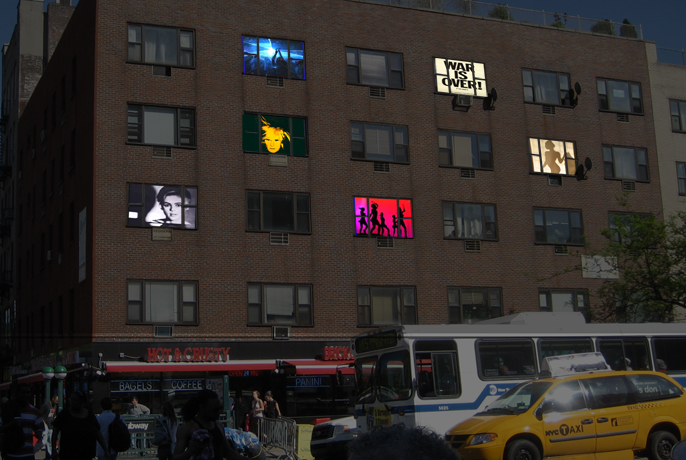Images from Wooden Skin Dress:
Final
Construction
This dress started with paper and foam prototypes.
Dye Testing
Testing dye and shading before applying to wood.
Shade Matching
We are all a lot closer in skin tone than society makes us out to be.
Trust me. It’s rad. You should watch it. But, be warned: you may feel different afterwards.
“Who I Am and What I Want”
Directed by Chris Shepherd and David Shrigley. It even has its own website.
For my Physical Computing midterm, I worked with Andrea Wolf and Sindy Butz to create a balance board that controls a video in Processing.
Here’s a video of me demonstrating for our class.
Balance Board Media Controller from Allison Walker on Vimeo.
The way it works: User steps on the board, which completes a switch inside the board. An accelerometer inside the board reports back to Processing which way the user is leaning. Right – fast forward. Left – slow down. Tilt forward – screen gets darker. Tilt backward – screen lightens.
Here are some photos of us during prototyping stage and assembly. Here’s a slideshow on Flickr.
I went to this last week. It was pretty neat. Apparently, Pam was a faculty member at ITP.

This week I worked with two other students, Noah Waxman and Macaulay Campbell, to create a short stop motion, animated film. When we added the sounds, it definitely became pretty ridiculous. We used a whiteboard to create our animations; it was a lot easier to work with than physical objects. Plus, our illustrator stole my is a graphic designer job, so it turned out well.
What Should We Do for Comm Lab?
Check out my cameo!
Update: This is a fun animation I found on YouTube, about the death of some bubble wrap.
This past Tuesday, one of the groups managed to get all 120 of the first-year students together to put on a group performance. It helped that we were all in the same room together. Our performance was to use beer bottles, packets of Pop Rocks, and our own hands, thighs and feet to recreate the sounds of wind, a thunderstorm, and make a symphony of 120 people eating Pop Rocks with their mouths open. It was wonderful.
What I found so special was the way that small, simple movements turned into something bigger than they could possibly have been if we had done them on individually. And, it was fun. Their performance idea was a reaction to the previous week’s speaker, Clifford Ross, whose initial-to-dogged curiosity in capturing the beauty of a mountain landscape in the end revealed a new world.
The performance and the pursuit of more, guided only by curiosity, got me thinking about how basic art pieces can be furthered by exploring new outlets of expression and investigation. For instance, what else could be representative of our performance of a thunderstorm? How would the sound of rain look, if we could make it 3-D? How can wind be visualized by pixels on a computer?
For instance, I was reminded of Synchronous Objects, which was launched this summer as a collaboration between Ohio State University and choreographer William Forsythe. Here’s an explanation: “Synchronous Objects reveals the interlocking systems of organization in William Forsythe’s ensemble dance One Flat Thing, reproduced through a series of objects that work in harmony to explore its choreographic structures and reimagine what else they might look like.” These “objects” include “data volumes” of the outside of the dancer’s body that dissolve into space, an interactive choreographic score, performative furniture as interpreted from the choreography, and a statistical graph of the dance data. There are definitely more, but I’ll let other people explore them for themselves.
In the end, this whole thing is about “Visualizing choreographic information”.
(What?…I mean….what???!!!!)
Wow. I’m just amazed and dumb-founded that this is even happening. One day, I really hope to be a part of this world of this dance-tech-visualization-curiosity stuff. Who cares if it doesn’t make a lot of sense.